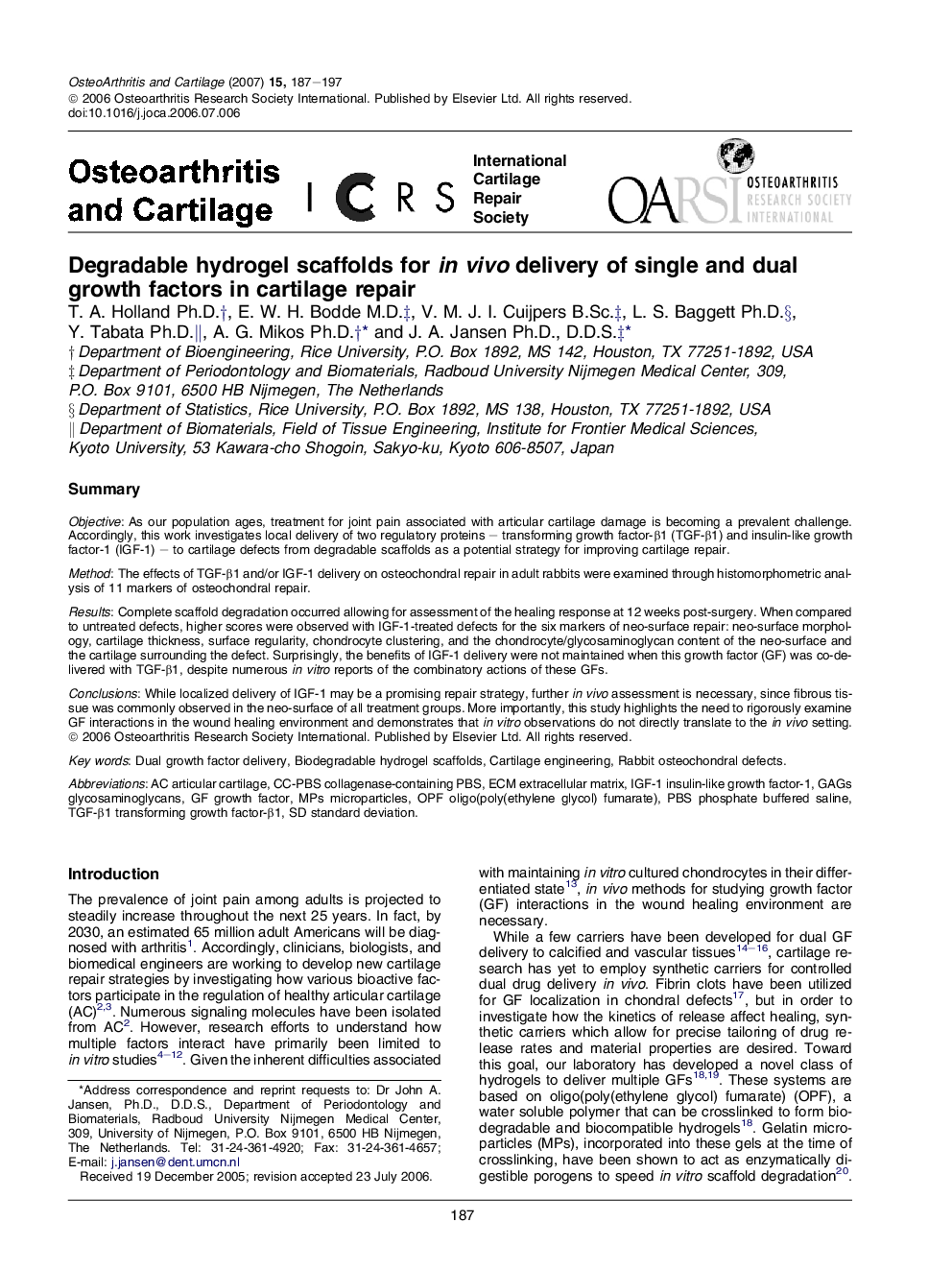| Article ID | Journal | Published Year | Pages | File Type |
|---|---|---|---|---|
| 3381832 | Osteoarthritis and Cartilage | 2007 | 11 Pages |
SummaryObjectiveAs our population ages, treatment for joint pain associated with articular cartilage damage is becoming a prevalent challenge. Accordingly, this work investigates local delivery of two regulatory proteins – transforming growth factor-β1 (TGF-β1) and insulin-like growth factor-1 (IGF-1) – to cartilage defects from degradable scaffolds as a potential strategy for improving cartilage repair.MethodThe effects of TGF-β1 and/or IGF-1 delivery on osteochondral repair in adult rabbits were examined through histomorphometric analysis of 11 markers of osteochondral repair.ResultsComplete scaffold degradation occurred allowing for assessment of the healing response at 12 weeks post-surgery. When compared to untreated defects, higher scores were observed with IGF-1-treated defects for the six markers of neo-surface repair: neo-surface morphology, cartilage thickness, surface regularity, chondrocyte clustering, and the chondrocyte/glycosaminoglycan content of the neo-surface and the cartilage surrounding the defect. Surprisingly, the benefits of IGF-1 delivery were not maintained when this growth factor (GF) was co-delivered with TGF-β1, despite numerous in vitro reports of the combinatory actions of these GFs.ConclusionsWhile localized delivery of IGF-1 may be a promising repair strategy, further in vivo assessment is necessary, since fibrous tissue was commonly observed in the neo-surface of all treatment groups. More importantly, this study highlights the need to rigorously examine GF interactions in the wound healing environment and demonstrates that in vitro observations do not directly translate to the in vivo setting.
